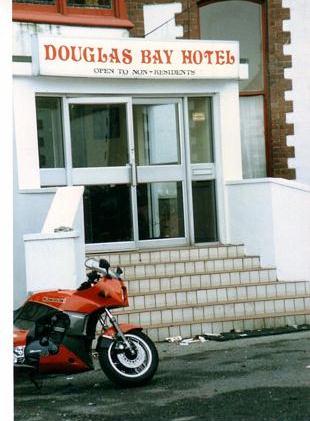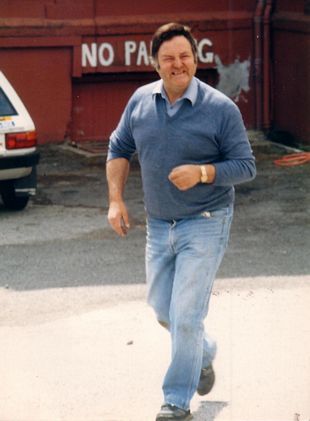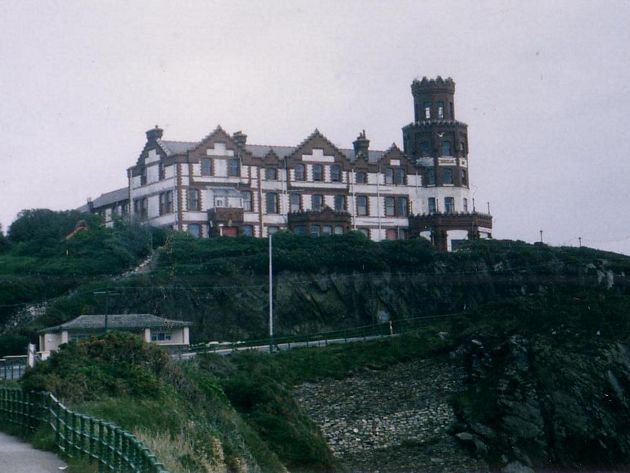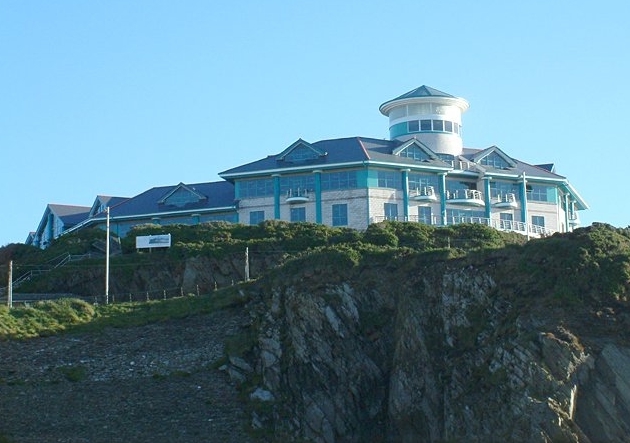The Douglas Bay Hotel was built for Mr. Samuel Horatio Marsden by Frederick Callow.
The original plans of the hotel, by William John Rennison, an architect of 11, Hill Street in Douglas, were based on suggestions made by Marsden and provided for a two storey building without a tower, but fortunately for posterity, Marsden had second thoughts on the design and in the words of a report on the hotel's opening, published in the Isle of Man Times and General Advertiser of 7th. August 1894, he "..determined to make a fuller use of the magnificent site by giving the hotel more lofty proportions..". To this end he commissioned the local architect Mr. E. Forrest who "..designed the tower and third storey, which lend dignity to the building, and make it a pre-eminently striking feature in the landscape of the bay..".
The Isle of Man Times described the hotel as being "..formed of three wings. Of the two principal wings, one forms the eastern front, immediately overlooking the bay and the other has a southern aspect, and is the front which the hotel presents to those who view it from Douglas valley. The other wing, which runs inland, is devoted to culinary purposes and to accommodation of the servants...Externally the building is of local stone - a large proportion quarried on the site - finished with cement, and with quoins and dressings of red brick from the Ballanard brickworks...The central tower, octagon in plan, and with both covered and open balconies commanding views in every direction, is of brick throughout..". As befitted a wine merchant, there was a nine feet high cellar beneath the building.
Internally, the flooring was of tongue and grooved pitch pine and this timber, in polished form, together with mahogany and carved oak was used extensively in the public rooms. The main staircase was described as "..spacious, and its woodwork massive, but effective in design, the newels being of mahogany, turned and carved with hand rail to match.." and the windows of the staircase were of stained glass.
Initially the hotel had about sixty rooms and an extra wing was added in 1897 and it was officially listed as having 100 rooms.
Carlo and Eva Raineri owned the Alexandra Hotel on the Queen's Promenade in Douglas and over the years gradually bought adjacent properties, as they became available, and extended the Alexandra into one of the largest hotels on the seafront. In the Spring of 1937, Hotel Alexandra Ltd. acquired the Douglas Bay Hotel from Mrs. Orton and the Douglas Licensing Court approved the transfer of the license on 8th July of that year.
The Raineris had barely three seasons in the hotel when war was declared in September 1939. Little was known of any wartime role for the Douglas Bay Hotel although it was reputed to have been used, for a time, to accommodate around 250 survivors from the Dunkirk evacuation and to have served as a billet for army personnel stationed on the Island. It was also rumoured to have been a military convalescent centre. It was not until 1995 that the true character of its wartime use came to be known. What must have been the best kept secret ever to involve the Island was revealed by two former members of the Auxiliary Territorial Service, the forerunner of the Women's Royal Army Corps. These ladies had been part of a section known as War Office "Y" Group and trained at the Douglas Bay Hotel to intercept and transcribe coded German radio signals. This data was sent off the Island and was decoded by one of the "Enigma" mechanical decoding machines which, unknownst to the Germans, had been captured intact. The fact that Britain was able to decode these signals, and to know in advance of enemy intentions, particularly as regards their submarines, was to prove a decisive factor in the battle of the Atlantic.
After the war The Douglas Bay Hotel resumed its place amongst the premier hotels of the Island. It was deservedly popular and, on a postcard of August 1957, a young lady staying at the hotel wrote that she was "..having a lovely time. Staying at the Hotel on the view. The scenery is beautiful from top of the cliff at the front of the Hotel. The weather is not too good, but there is plenty of entertainment in the Hotel itself..".
As well as catering to their own guests, many of the large hotels at that period provided entertainment and drinking facilities to non-residents and at the Douglas Bay Hotel this additional custom was provided by their Texas Bar. This began as a music lounge bar whose organist took to wearing a cowboy hat. In due course he was joined by other musicians who also began to dress in cowboy style and the Western theme was adopted by the management and the decor of the bar was changed to match. The Texas Bar was at times, such as Glasgow Fair Week, to become over popular and gained a certain notoriety.
The Douglas Bay Hotel was probably unique in having its own post box, red painted in the style of official post office boxes. However, it had no posting slot and was probably used by the hotel to contain outgoing mail to be collected by the Electric Railway. The box was set into the wall near the electric tram line. Its date is not known but it was discernible on a aerial view post card of 1957.
Although as late as October 1985 planning consent was given for a covered swimming pool at the hotel and this was erected along the frontage with the King Edward Road, the decline in tourism forced a sale of the hotel and its prestigious headland site. Demolition of the hotel started in the Autumn of 1988 and during the course of this work, in the afternoon of 3rd November, a fire broke out which spread quickly through the building, leaving it a gutted shell. With the demolition of the hotel, Onchan Head lost what had been described in 1894 as "..one of the conspicuous land marks of the bay..".
Temporary use was made of this prime site as a depot dealing with rubbish skips. Then, in April 1994 the owners, Milton Properties who had owned the site since 1988, put forward plans to erect a 60,000 square feet office complex on the site. Approval was given in 1996.


THE HOTEL ENTRANCE AND REGULAR RESIDENT BILL SMITH

THE HOTEL AS IT WAS WHEN WE STAYED AND USED THE TEXAS BAR

THE HOTEL HAS BEEN REPLACED WITH OFFICES